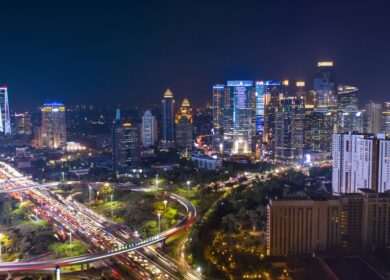By Maureen Tseng
Hoffman Singapore
If you are planning on doing some solid media outreach in Asia, then you better get yourself acquainted fast with this term — “Guanxi.”
Guanxi, coming from Chinese roots, is the practice of networking and securing influential relationships to facilitate business and other dealings. According to Wikipedia, Guanxi describes “a personal connection between two people in which one is able to prevail upon another to perform a favor or service, or be prevailed upon” to return that favour.
A lot of businesses in China and other countries in Asia, especially those in the Southeast Asian region, practice Guanxi and are active in developing a large, intricate network that is based on personal and mutual trust.
The same goes for dealing with media. If you are planning to practice PR successfully in these markets, you must take the time to form relationships to be successful. Here are three tips to building great Guanxi with media in Asia:
1. Help them to be successful
Just like anywhere else, journalists in Asia are always on the lookout for the latest scoop or Pulitzer-winning story. If you can bring them solid interview opportunities, strong contacts in the industries they cover, or even access to research and information that would give their stories added weight, you’re on your way to building great Guanxi. Make them look golden to their editors. Chances are they’ll be more willing to hear you out the next time you call with that meh-pitch that you absolutely have to push out for your client.
2. Be a pal
Journalists are an overworked bunch. With ever-shrinking media pools, it is very likely that your average journo is stuck in the office, churning out story after story. Catching up with them over a coffee or a meal is a great way for them to get out, and an excellent platform for you to bond over non-work-related topics.
It is common practice in Asia for PR practitioners to organize coffee sessions or other informal get-togethers for media with their spokespeople. In the Philippines, it is not uncommon for PR people to remember journalists’ birthdays and weddings and send them a small gift. Western media and PR practitioners may baulk at this blurring of lines between church and state. However, it is not the Asian way. With Guanxi, the personal and the professional often commingle. The main thing is to be professional and friendly, while building your connections to the point that they feel comfortable with and trust you as a pal.
3. Start Early
Building good Guanxi should not be reserved only for the senior correspondents and editors. Start building good rapport with rookie reporters and help them widen their network of sources. There’s no telling where these rookies will end up 10 years from now. I have personally encountered newbies 15 years ago who are respected editors today, and who are willing to listen when I have a pitch. Other rookies are now senior corporate communications managers and our clients.
If you are still not convinced, think of it this way. Guanxi is not very different from that Western adage: you scratch my back, and I’ll scratch yours. Practice some good ol’ Quid Pro Quo with the media in Asia next time. It may just be good for your career in PR.


